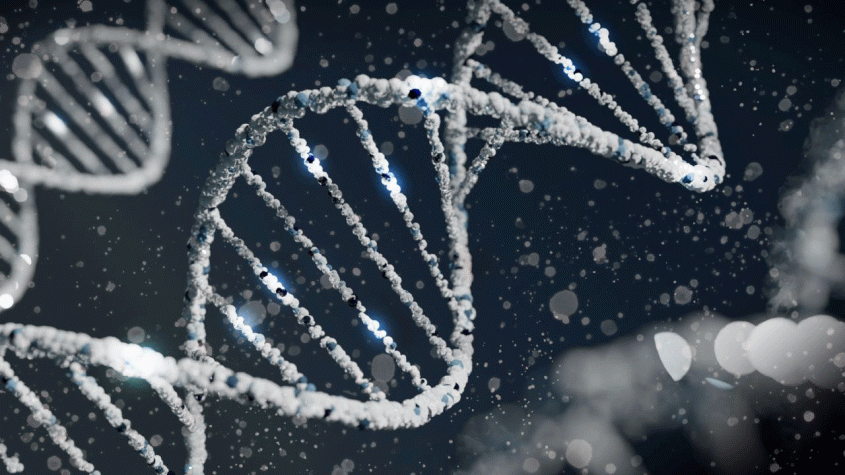CVM researchers uncover sperm development mechanism behind some male infertilities
As of 2021, it is estimated that 17.5% of the adult population – roughly one in six worldwide – experience infertility, with male infertility contributing 30% of all cases. However, researchers from Cornell have unveiled a finding that may help solve some of the mysteries behind this issue.
The Cornell University College of Veterinary Medicine (CVM) scientists shared in their recent publication from Nature Communications, the discovery that a key gene, BRDT, dictates whether a sperm cell becomes viable or not. The labs of Dr. Paula Cohen, professor of genetics in the College of Veterinary Medicine and associate vice provost for life sciences, and Dr. Charles Danko, an associate professor at the Baker Institute for Animal Health and in the Department of Biomedical Sciences, worked together on the finding.
Germ cell gymnastics
The formation of sex cells, the female oocytes and the male spermatocytes, is an intricate biological process involving the tight coordination of DNA replication, transcription, and translation, that turns DNA into essential proteins. When this process is disrupted, the resulting sex cells are unable to develop into a healthy fetus, causing infertility.
“You need transcription in order to guide the cell towards the right developmental trajectory,” said Danko. “We tried to understand how germ cells go through these differentiation gymnastics, from a stem cell, to a fully differentiated sperm cell.”
A protein key to sperm development
BRDT, also known as testis-specific bromodomain protein, was already known to have a role in remodeling DNA during sperm development. Furthermore, complete loss of BRDT has shown to block spermatocytes' survival into the first meiotic division, resulting in a complete absence of fully developed sperm.
The value of this work shines in the connection between BRDT and its mechanistic control over DNA transcription during sex cell development. It has been known that this protein is a target for male contraception, but it remained unclear how inhibiting BRDT resulted in infertility.
Sex cells replicate using a process called meiosis, where DNA is exchanged between chromosomes. During meiosis, DNA needs to be compacted so that its exchange can occur between chromosomes. However, the cell also needs the DNA to be accessible by transcription machinery, including RNA polymerase, the enzyme that reads DNA and creates mRNA for protein synthesis, so that protein formation can occur later.
“A central question is how sperm cells are able to balance opposing tasks of chromatin decondensation to allow transcription and meiotic chromosome pairing and synapsis to aid the defining events in prophase I,” said Danko.
A pregnant pause
Using a mouse model, the authors measured multiple aspects of genome function throughout prophase I, the first and longest stage of meiosis. This included mRNA abundance, RNA polymerase activity, and how "open" each fragment of DNA is. Members of the Cohen lab helped interpret the results, being familiar with meiosis, and crafted state-of-the art visualizations and analysis.
By integrating these genomic datasets, the authors conclude two major findings: The first being RNA polymerase pauses during DNA transcription in early prophase I. This halt is connected to the rapid and synchronous activation of thousands of genes essential in the development of healthy male sex cells. Second, BRDT is a critical molecule which facilitates this transition. If BRDT fails to send this signal, RNA polymerase will fail to activate and the sperm cell will be nonviable.
“Basically, BRDT gives RNA polymerase the go signal, it turns a red light into a green light,” said Danko.
Data tells the story
The findings were serendipitous. “It was really a discovery approach, we didn’t know what we were going to find. It was a matter of parsing out the data and having the data tell us what the story is,” said first author Adriana Alexander, Ph.D. ‘21 and current postdoctoral associate at the NIH.
“This particular paper is sort of unique in that it's at a good intersection of Paula's expertise and mine,” said Danko. “We are primarily transcription biologists. We try to understand how genomes influence transcription, and then ultimately variation in traits, while Paula's lab works on this process of meiosis. And I think the real driver of the project was Adriana.”
The Cohen lab are experts on identifying intervention points through spermatogenesis that could be targets of contraceptive drug targeting, specifically looking at prophase I in meiosis.
This paper is the capstone of Alexander’s Ph.D. thesis; she hopes to continue this research in her own lab, perhaps exploring the connection between this process and evolution, and determining if a similar method of regulation exists in female sex cells.
“I am fascinated by the genesis of life and how that is being regulated at the molecular level,” said Alexander. “Working in both the Danko and Cohen labs gave me the opportunity to explore both topics.”
Written by Megan Keller





